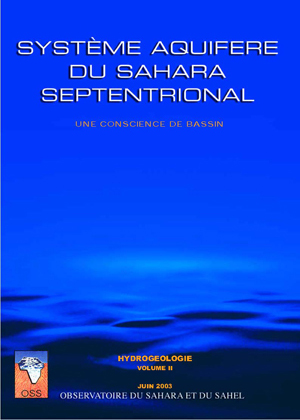Author: OSS
Published in: 2004
Project:
Theme: Water resources management
Type: Studies and reports
ISBN: 9973-856-00-7
Country:
North-Western Sahara Aquifer System: Hydrogeology, volume II
"Serving as a driving and facilitating force, OSS, in carrying out the SASS Programme, relies first and foremost on the expertise available in specialised, well experienced institutions of the three countries as well as on broad international partnership.
The North-Western Sahara Aquifer System, (NWSAS), shared by Algeria, Tunisia and Libya, has considerable water reserves that cannot be totally exploited and are only very partially renewed. The NWSAS area over a million km2 and is composed of two major aquifers layers, the Continental Intercalary and the Terminal Complex. Over the last thirty years, abstraction by drilling has risen from 0.6 to 2.5 billion m3/yr. This rate of abstraction involves many risks: strong impact on neighbouring countries, salinisation, elimination of artesianism, drying up of outlets, etc. Simulations on the NWSAS Model have enabled OSS to pinpoint the location of the most vulnerable areas and map the risks facing the aquifer system. The three countries concerned by the future of the NWSAS will need to work together to develop a joint management system for the basin. A consultation mechanism needs to be instituted and gradually put into operation.
The present report is part of a set of three volumes which sum up the scientific activity of the project ""North-Western Sahara Aquifer System"" (SASS/OSS). It present the physiographic and hydrogeological data which have been taken into consideration in developing the digital model that simulates the hydrodynamic behaviour of the Saharan aquifers.
The present report presents respectively:
the aquifer formations of the North-Western Sahara and their schematisation with a view to their hydrogeological modelling;
the various hydrogeological characteristics of the aquifers of this system through an analysis that is focused on hydraulic exchanges and the impact of the exploitation on piezometry and on water salinity;
the chemical quality of the water and its isotopic characteristics allowing a better understanding of the hydrodynamic operating of the system."
